Merrily Tobin visited Jalvayu Vihar (JVV – where I have lived since retiring from the Indian Navy) for the first time in 1993. JVV was then just three years old. She recalls, “There were hardly any birds out here. The trees were just about picking up and the campus had a dry, barren look about it
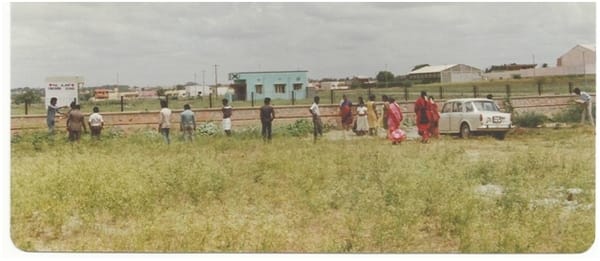
JVV site, circa 1987. Courtesy: Wg.Cdr.KJ Batt

Jalvayu Vihar: Under Construction – 1989 – Barren Main Road & water tower. Pic: Wg.Cdr.KJ Batt
In the next few years, JVV grew greener; the birds began to take notice and slowly moved in and so did Merrily Tobin along with her mother, who is a proud owner of an apartment there. Between her home and never ending demands at the work place, she still finds time to indulge in ‘Bird Watching’.
Now a confirmed birder, Merrily adds “My very first friends in the world were the birds and animals in our garden. I used to spend hours with squirrels, sparrows, bulbuls, magpie robins and numerous other birds that shared our garden. Birding to me wasn’t just a hobby but my very existence. Wherever I go, wherever I am, the first things I notice are birds!”
Over a period of time, JVV has become lush and green with more than 700 trees in an area of 22 acres. Today we boast of variety of trees such as Ashoka, Gulmohar, Eucalyptus, Pine, Pomegranate, Tamarind, Banana etc. A dedicated crew of 19 garden and conservancy staff ensure the trees are well looked after and nourished. Small wonder that the tiny, chirpy creatures we call “Birds” have found a home here.

In front of the water tower at Jalvayu Vihar. Pic: George Eapen
Armed with just a pair of binoculars, and a passionate desire to be one with nature, Merrily has diligently kept note of the “Winged Residents of JVV”. The number of birds that have made JVV their home is truly amazing. Some are residents while others visit us regularly and a few make guest appearances. Merrily recently posted a documentation of the birds that can be seen in Jal Vayu Vihar on the colony’s Email group. I found her work not only interesting but an eye opener to most of us. With the objective of making Merrily’s work reach a wider audience, I have reproduced her effort here. I hope this will enable Bangaloreans and JVVians in particular and to become aware of our surroundings and help preserve the green cover of our city which may truly be the “Garden City” once again. (Incidentally, when I requested Merrily’s permission to publish her work, she e-mailed me with modesty and grace stating, “Please tone down the ‘Merrily’ bit”).
Merrily’s Jottings
Some of the distinct species of birds that I have seen are below.
Barbets: Our Gulmohar and African Tulip trees have little nest holes, cut out by the Barbets.
Coppersmith Barbet. Pic: Wikimedia Commons
The tiny Tailor Bird: It sews the leaves of the mango tree near the west gate each year to create a tiny nest and manages to have quite a brood, a really noisy one at that. It also nests in the Ashoka.
Sunbirds: Like the Tailor Bird, the Sunbirds flit in and out of trees noisily and even visit our potted flowering plants in search of nectar. They are usually in company with “The White Eye”.
Warblers: The Ashy Wren-warbler, a noisy creature but gone missing from JVV. Cats?
Barn Owls: They cheer JVV through the night and help keep it rat free.
The Sunbirds, Tailor birds, Tits, Flycatchers, and Spider Hunters can be seen at almost all hours during the day flitting in and out of our Singapore Cherry trees and our other flowering trees. The two spotted doves near the school coo and coo all morning and then go about their business the rest of the day. You can see and hear the others off and on.
And now for our visitors!
Rosy Pastor. Pic: Wikimedia Commons
Rosy Pastors: These flock here in huge numbers and create quite a ruckus as they zoom in and out of our Silver Oak and Peepal trees in huge swarms every winter. (Incidentally, they come to visit us all the way from Eastern Europe).
Bulbuls: They are majestic, would love to find a nesting place here and come in regularly looking desperately for a roost. But they find grave danger in the form of the numerous cats that lurk around all our Singapore Cherry trees that attract these beauties. Their melodious calls are unmistakable and you know the bulbul has come a-calling the minute it enters our campus. Unless JVV is freed of its numerous cats, it is highly unlikely that these birds will take up residence here. They nest in shrubs which are too close to the cats for their liking!
Red-whiskered Bulbul. Pic: Wikimedia Commons
Golden Oriel: This comes once in a while and like the Bulbul gives its unmistakable call that sounds like a “flute in water”. I don’t know how to describe it but you can listen to it here.
Crow Pheasant: It used to come once in a month, roughly and would be around the bougainvillea creepers near the western gate and give its quaint call. I haven’t seen it in a while, especially after a fire ruined the canopy there. Its call is captured here.
Crow Pheasant. Pic: Wikimedia Commons
House swifts: These and Swallows are also visible in and around JVV.
I have spotted all these birds and many more in JVV, at some time or the other. Some stay on for a month or two and then disappear while others are content with giving us a weekly or an annual visit. Birds favour those trees that offer them food, nesting sites and roosting places. The trees in JVV that fit this equation are the Peepul, a hot favourite of all birds. The African Tulip and the Gulmohar are magnets for Barbets and Parakeets as the soft trunk of these trees can be burrowed into easily. The Singapore Cherry with its juicy fruit and the Silver Oak with its flowers full of tasty nectar and its height that keeps birds safe from dangerous ground dwellers also attract avians.
The other avians seen in JVV are Spotted Doves, Jungle Myna, Grey Tit, Flowerpecker, Koels, Brown Flycatcher, Spider Hunter, Kites, Drongo, Parakeets and ShikaraTo see even one tree chopped down is heart breaking! The myriad other creatures that dwell in these trees provide sustenance for these birds. The first step to the extinction of a species is the destruction of its habitat. The once ubiquitous sparrow is long gone, the others are soon to follow suit. JVV has thus far helped these birds and animals fight a losing battle. Must we withdraw our support now?
My humble advice to makers of the city: Bangalore has lost what it was once known for. JVV is a semblance of that old Bangalore. Let’s try to keep it that way. A more practical option would be to trim the very large trees so that they cease to be dangerous and yet continue to support this huge life system they harbour.
No matter where you live, you probably have birds of some kind, which you can observe. It requires no money or investment, just a desire to watch God’s creation enjoying the bounties of nature in its own habitat. We can help by respecting nature and providing an environment which supports bird life. And a hobby like ‘Birding’ can be very therapeutic, especially in this day and age of instant communication and fast food.
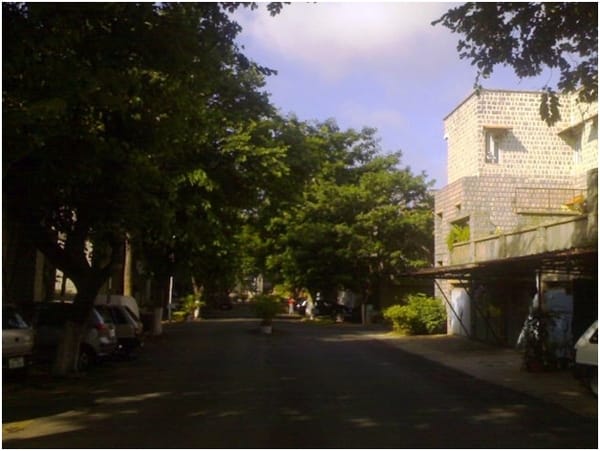
Tree lined main road at Jalvayu Vihar. Pic: Wg.Cdr.KJ Batt.
We in Jalvayu Vihar are extremely lucky to have nature lovers like Merrily Tobin who have devoted some of their precious time in cataloging all the birds in JVV and in turn educating us, raising our knowledge levels and helping us to develop an interest in birds. Impressed by her work I have started spending some time looking up at the trees, trying to get a glimpse of the winged residents of JVV. All is well as long as “The birds in JVV sing Merrily”
⊕
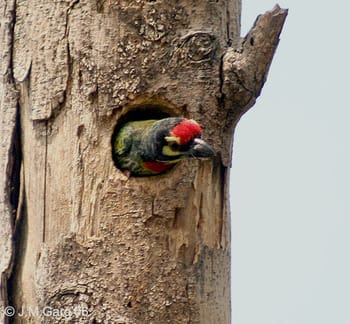
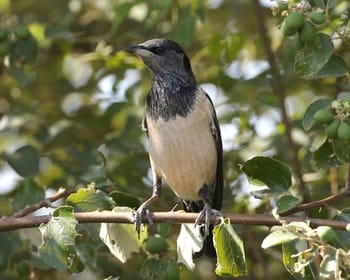

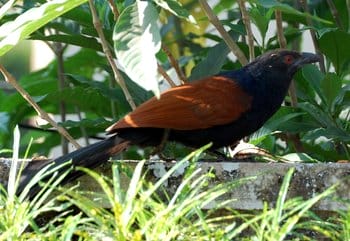
Wonderful article… very informative and interesting to read. Congrats to Merilly Tobin for her contributions.
George Eapen
JVV – B-134.
Dear Capt. Prabhakar,
Excellent article by you both, and work by Merrily Tobin. I think it’s great that you and she have taken the trouble to document this. Most of us take the space around JVV for granted, and this is one way to appreciate it!
Keep them coming!
Warm Regards
Veena
http://vnasrikanth.wordpress.com/
Dear Capt. Prabhakar,
Excellent article by you both, and work by Merrily Tobin. I think it’s great that you and she have taken the trouble to document this. Most of us take the space around JVV for granted, and this is one way to appreciate it!
Keep them coming!
Warm Regards
Veena